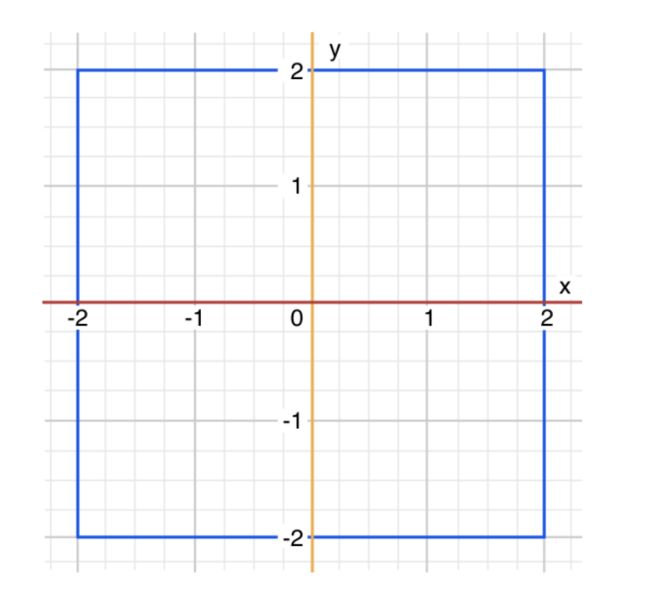控制流 (Control Flow)
自从苹果2014年发布Swift,到现在已经两年多了,而Swift也来到了3.1版本。去年利用工作之余,共花了两个多月的时间把官方的Swift编程指南看完。现在整理一下笔记,回顾一下以前的知识。有需要的同学可以去看官方文档>>。
For-in循环 (For-in Loop)
for index in 1...5 {
print("\(index) times 5 is \(index * 5)")
}
// 1 times 5 is 5
// 2 times 5 is 10
// 3 times 5 is 15
// 4 times 5 is 20
// 5 times 5 is 25
如果不需要序列的每一个值,使用_代替变量的名字:
let base = 3
let power = 10
var answer = 1
for _ in 1...power {
answer *= base
}
print("\(base) to the power of \(power) is \(answer)")
// Prints "3 to the power of 10 is 59049"
使用for-in遍历数组的所有元素:
let names = ["Anna", "Alex", "Brian", "Jack"]
for name in names {
print("Hello, \(name)!")
}
// Hello, Anna!
// Hello, Alex!
// Hello, Brian!
// Hello, Jack!
使用for-in遍历字典的所有键值对:
let numberOfLegs = ["spider": 8, "ant": 6, "cat": 4]
for (animal, legCount) in numberOfLegs {
print("\(animalName)s have \(legCount) legs")
}
// ants have 6 legs
// spiders have 8 legs
// cats have 4 legs
While循环 (While Loops)
Swift提供了两种While循环:
-
while:执行循环体之前检查循环条件 -
repeat-while:执行完循环体之后,再检查循环条件
While
while循环的通用形式:
while condiction {
statements
}
Repeat-While
repeat-while循环的通用形式:
repeat {
statements
} while condition
条件语句
If
temperatureInFahrenheit = 40
if temperatureInFahrenheit <= 32 {
print("It's very cold. Consider wearing a scarf.")
} else {
print("It's not that cold. Wear a t-shirt.")
}
// Prints "It's not that cold. Wear a t-shirt."
将多个if语句串联在一起:
temperatureInFahrenheit = 90
if temperatureInFahrenheit <= 32 {
print("It's very cold. Consider wearing a scarf.")
} else if temperatureInFahrenheit >= 86 {
print("It's really warm. Don't forget to wear sunscreen.")
} else {
print("It's not that cold. Wear a t-shirt.")
}
// Prints "It's really warm. Don't forget to wear sunscreen."
Switch
let someCharacter: Character = "z"
switch someCharacter {
case "a":
print("The first letter of the alphabet")
case "z":
print("The last letter of the alphabet")
default:
print("Some other character")
}
// Prints "The last letter of the alphabet"
在Swift中,下面的写法是错误的:
let anotherCharacter: Character = "a"
switch anotherCharacter {
case "a": // Invalid, the case has an empty body
case "A":
print("The letter A")
default:
print("Not the letter A")
}
// This will report a compile-time error.
因为不同于C语言中的switch,这个Switch语句不能同时匹配a和A。如果想使用一个case同时满足a和A,需要写成下面这种形式:
let anotherCharacter: Character = "a"
switch anotherCharacter {
case "a", "A":
print("The letter A")
default:
print("Not the letter A")
}
// Prints "The letter A"
间隔匹配 (Interval Matching)
let approximateCount = 62
let countedThings = "moons orbiting Saturn"
var naturalCount: String
switch approximateCount {
case 0: naturalCount = "no"
case 1..<5: naturalCount = "a few"
case 5..<12: naturalCount = "several"
case 12..<100: naturalCount = "dozens of"
case 100..<1000: naturalCount = "hundreds of"
default: naturalCount = "many"
}
print("There are \(naturalCount) \(countedThings).")
// Prints "There are dozens of moons orbiting Saturn."
多元组 (Tuples)
let somePoint = (1, 1)
switch somePoint {
case (0, 0):
print("(0, 0) is at the origin")
case (_, 0):
print("(\(somePoint.0), 0) is on the x-axis")
case (0, _):
print("(0, \(somePoint.1)) is on the y-axis")
case (-2...2, -2...2):
print("(\(somePoint.0), \(somePoint.1)) is inside the box")
default:
print("(\(somePoint.0), \(somePoint.1)) is outside of the box")
}
// Prints "(1, 1) is inside the box"
实际上(0, 0)可以满足这四个情况,然而只有第一个满足(0, 0)的情况才会被使用。其他后面的会被忽略。
值绑定 (Value Bindings)
let anotherPoint = (2, 0)
switch anotherPoint {
case (let x, 0):
print("on the x-axis with an x value of \(x)")
case (0, let y):
print("on the y-axis with a y value of \(y)")
case let (x, y):
print("somewhere else at (\(x), \(y))")
}
// Prints "on the x-axis with an x value of 2"
Where
在switch还可以使用where分句来添加额外的条件。
let yetAnotherPoint = (1, -1)
switch yetAnotherPoint {
case let (x, y) where x == y:
print("(\(x), \(y)) is on the line x == y")
case let (x, y) where x == -y:
print("(\(x), \(y)) is on the line x == -y")
case let (x, y):
print("(\(x), \(y)) is just some arbitrary point")
}
// Prints "(1, -1) is on the line x == -y"
复合情况 (Compound Cases)
let someCharacter: Character = "e"
switch someCharacter {
case "a", "e", "i", "o", "u":
print("\(someCharacter) is a vowel")
case "b", "c", "d", "f", "g", "h", "j", "k", "l", "m",
"n", "p", "q", "r", "s", "t", "v", "w", "x", "y", "z":
print("\(someCharacter) is a consonant")
default:
print("\(someCharacter) is not a vowel or a consonant")
}
// Prints "e is a vowel"
还可以在复合情况使用值绑定:
let stillAnotherPoint = (9, 0)
switch stillAnotherPoint {
case (let distance, 0), (0, let distance):
print("On an axis, \(distance) from the origin")
default:
print("No on an axis")
}
控制转换语句 (Control Transfer Statements)
控制转换语句可以改变代码的执行顺序。Swift有5个控制转换语句:
- continue
- break
- fallthrough
- return
- throw
Continue
continue告诉循环停止正在做的事,然后继续执行下一个遍历:
let puzzleInput = "great minds think alike"
var puzzleOutput = ""
let charactersToRemove: [Character] = ["a", "e", "i", "o", "u", " "]
for character in puzzleInput.characters {
if charactersToRemove.contains(character) {
continue
} else {
puzzleOutput.append(character)
}
}
print(puzzleOutput)
// Prints "grtmndsthnklk"
Break
break可以让整个控制流立即停止。
在循环语句中使用Break (Break in Loop Statement)
当在循环语句中使用时,break停止整个循环,然后跳到循环下面的代码。
在Switch语句中使用Break (Break in Switch Statement)
当在Switch语句中使用时,break停止整个Switch语句,然后跳到Switch语句下面的代码。
Fallthrough
只要第一个匹配的情况执行完成,整个Swift的Switch语句就会停止。在C语言中,需要在每一个case最后面加上break来防止跳到下一个case。如果我们需要C语言风格的往下跳到下一个case的功能,可以使用fallthrough。
let integerToDescribe = 5
var description = "The number \(integerToDescribe) is"
switch integerToDescribe {
case 2, 3, 5, 7, 11, 13, 17, 19:
description += "a prime number, and also"
fallthrough
default:
description += "an integer."
}
print(description)
// Prints "The number 5 is a prime number, and also an integer."
注意: fallthrough关键字不会检查下一个case的条件是否满足,而是直接执行下一个case的代码。
有标签的语句 (Labeled Statements)
在Swift中,我们可以把循环和条件语句嵌套到其他循环和条件语句里面,来实现更复杂的控制流结构。当然,循环和条件语句可以各自使用break来提前终止自己的执行。所以,明确的说明想要终止哪一个循环或者条件语句非常重要。
为了达到这个目的,我们可以给循环和条件语句定义一个标签:
label name: while condition {
statements
}
提前退出 (Early Exit)
guard语句就像if语句一样,根据一个布尔值来决定是否执行里面的代码。我们可以使用guard语句来要求一个条件必须是true,然后guard语句后面的代码才能被执行。如果条件是false,那么会执行else分句的代码。
func greet(person: [String: String]) {
guard let name = person["name"] else {
return
}
print("Hello \(name)!")
guard let location = person["location"] else {
print("I hope the weather is nice near you.")
return
}
print("I hope the weather is nice in \(location).")
}
greet(person: ["name": "John"])
// Prints "Hello John!"
// Prints "I hope the weather is nice near you."
greet(person: ["name": "Jane", "location": "Cupertino"])
// Prints "Hello Jane!"
// Prints "I hope the weather is nice in Cupertino."
使用guard语句可以提高代码的可读性,可以使我们避免包装很多个else代码块。
检查API的可用性 (Checking API Availability)
if #available(iOS 10, macOS 10.12, *) {
// Use iOS 10 APIs on iOS, and use macOS 10.12 APIs on macOS
} else {
// Fall back to earlier iOS and macOS APIs
}
*不能省略,是用来指定其他任何平台。
第五部分完。下个部分:【Swift 3.1】06 - 方法 (Functions)
如果有错误的地方,欢迎指正!谢谢!
